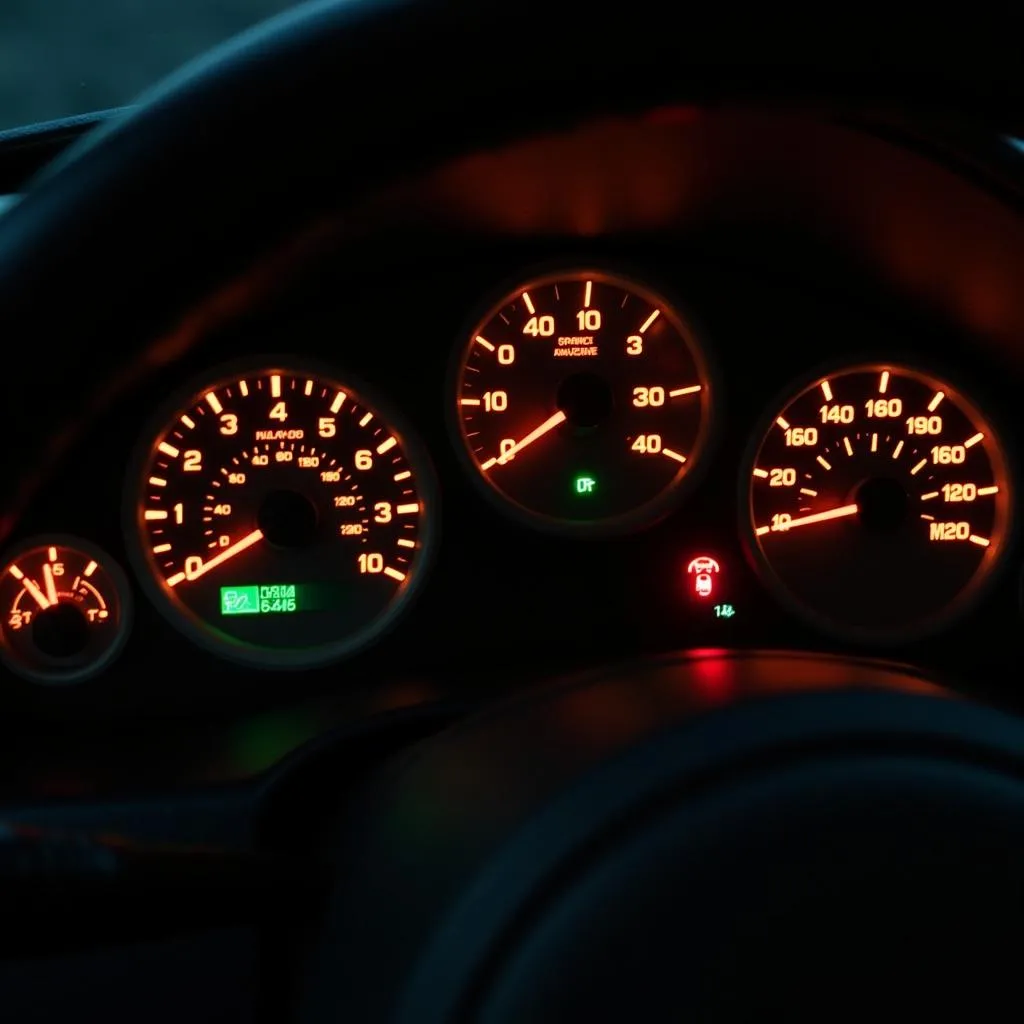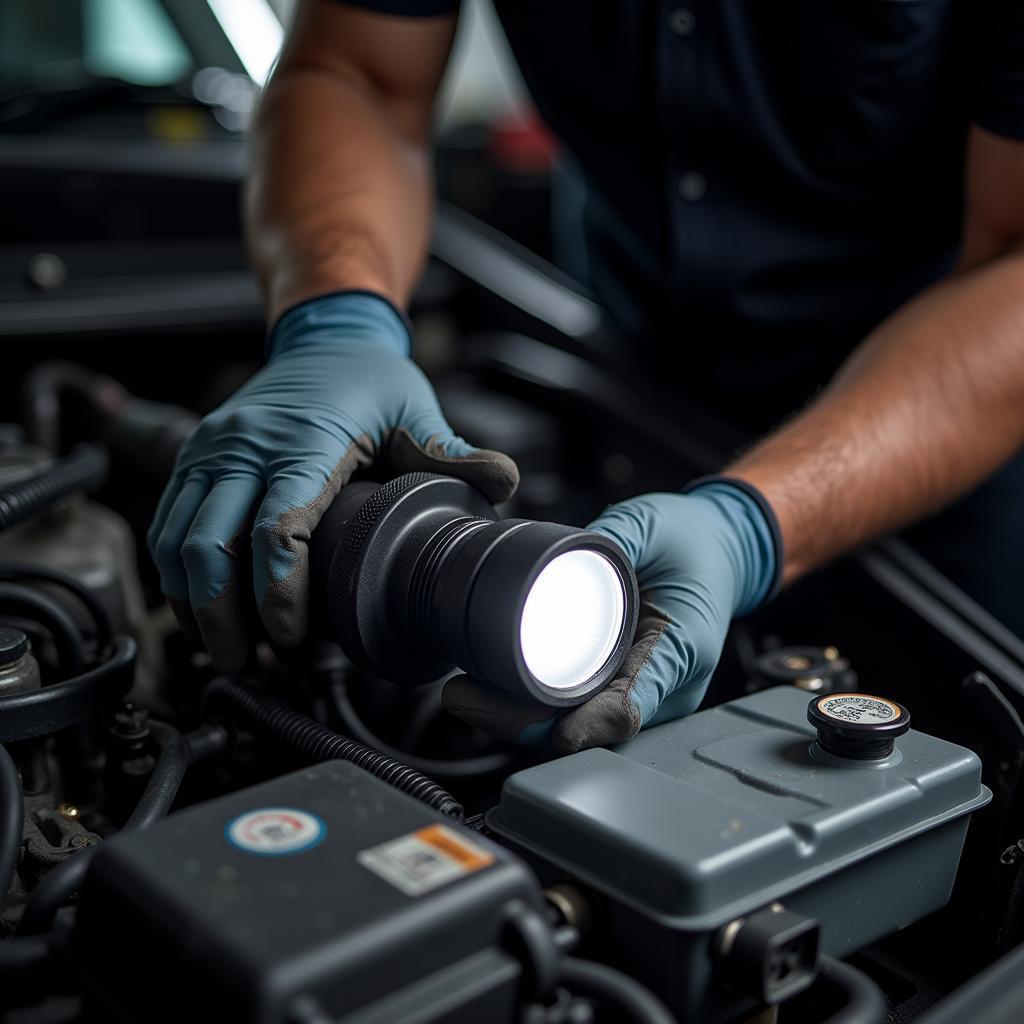The emergency brake warning light on your 2013 Ford Fusion is designed to grab your attention. Whether it’s a steady glow or an intermittent flash, this warning signal indicates a potential issue with your vehicle’s braking system. Ignoring it could compromise your safety and potentially lead to more costly repairs down the line. This article will delve into the common causes behind the 2013 Ford Fusion emergency brake warning and provide you with practical solutions to address them.
Common Causes of the Emergency Brake Warning Light
Several factors can trigger the emergency brake warning light on your 2013 Ford Fusion. Identifying the root cause is crucial for effective troubleshooting. Here are some of the most common culprits:
1. Engaged Parking Brake
This might seem obvious, but it’s surprisingly common. Before panicking, double-check that you haven’t accidentally left your parking brake partially engaged. Even a slight engagement can trigger the warning light.
2. Low Brake Fluid Level
Your Ford Fusion’s braking system relies on hydraulic pressure to function properly. Low brake fluid levels can significantly reduce braking power and trigger the warning light. This could be due to a leak in the system or worn-down brake pads.
3. Faulty Brake Light Switch
The brake light switch, located on the brake pedal, is responsible for activating your brake lights when you press the pedal. A malfunctioning switch can disrupt the emergency brake warning light system.
4. ABS Sensor Issues
The Anti-lock Braking System (ABS) in your Ford Fusion relies on sensors to monitor wheel speed and prevent wheel lockup during braking. A faulty ABS sensor can disrupt the entire braking system and trigger the warning light.
5. Worn-Out Brake Pads
Worn brake pads not only reduce braking efficiency but can also activate the emergency brake warning light. Most modern vehicles have a wear indicator built into the brake pads that trigger a warning when the pads reach a certain level of wear.
Troubleshooting and Solutions
Now that we’ve covered the common causes, let’s explore some practical solutions:
1. Check Your Parking Brake: Begin with the simplest solution—make sure your parking brake is fully disengaged.
2. Inspect Brake Fluid: Check the brake fluid level in the reservoir under the hood. If it’s low, carefully add the recommended brake fluid for your 2013 Ford Fusion. If you notice a consistent need to top up the brake fluid, it indicates a leak that needs immediate professional attention.
3. Inspect Brake Pads: Visually inspect your brake pads for wear. If they appear thin or you notice a grinding noise when braking, it’s time for a replacement.
4. Seek Professional Diagnostics: For issues like faulty brake light switches, ABS sensor problems, or suspected brake system leaks, it’s best to seek help from a qualified mechanic. They have the expertise and diagnostic tools to accurately pinpoint and rectify the problem.
Expert Insights
“Ignoring a persistent emergency brake warning light can escalate minor issues into major repairs,” says John Miller, a certified automotive technician with over 20 years of experience. “Regular vehicle maintenance, including brake inspections, can help prevent many of these issues from arising in the first place.”
Conclusion
A glowing emergency brake warning light in your 2013 Ford Fusion should never be ignored. By understanding the common causes and solutions outlined in this guide, you can take proactive steps to ensure your safety on the road. Remember, when in doubt, consult with a qualified mechanic for proper diagnosis and repair.


